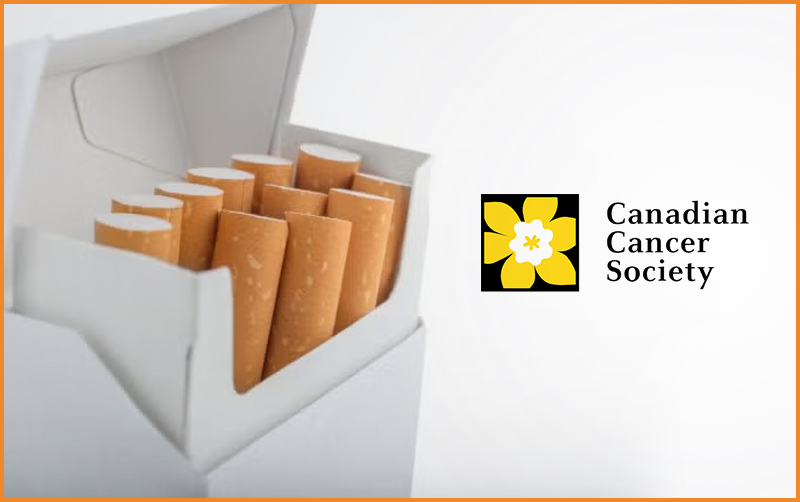
More countries now require tobacco plain packaging and graphic health warnings on cigarette packages
18 November 2025: An international report released today by Canadian Cancer Society (CCS) reveals ongoing progress for tobacco plain packaging and graphic picture warnings worldwide. The CCS report, titled Cigarette Package Health Warnings: International Status Report, details global developments on plain packaging, ranks 212 countries and territories on the size of their health warnings on cigarette packages, and lists the 140 countries and territories that now require graphic picture warnings.
The report also highlights Canada’s and Australia’s groundbreaking move to require health warnings printed directly on every individual cigarette-first implemented in Canada in 2024 and in Australia in 2025.
Plain packaging – global progress
Plain packaging means cigarette packages can’t display brand colours, logos or design elements, and must use a standard shape and colour, making all brands look the same. Guidelines under the international tobacco treaty, the World Health Organization (WHO) Framework Convention on Tobacco Control (WHO FCTC), recommend that countries consider implementing plain packaging on cigarette packages.
Presently, 44 countries and territories are actively moving forward with plain packaging, with 27 having adopted the measure, 3 having it in practice, and 14 in the process of implementation.
“Plain packaging is a key measure to protect youth and to reduce tobacco use,” says Rob Cunningham, Senior Policy Analyst, CCS. “Plain packaging – which acts as a mini-billboard – strips brands of their allure, an allure that prompts many youth to begin smoking. It is encouraging that an increasing number of countries have adopted this measure. The sooner more do so, the sooner more lives will be saved.”
The 27 countries/ territories that have adopted plain packaging is up from only 9 in 2018 and from 25 in 2023.
Australia was the first country to implement plain packaging in 2012. Plain packaging has since been implemented in France (2016), United Kingdom (2016), Norway (2017), Ireland (2017), New Zealand (2018), Saudi Arabia (2019), Turkey (2019), Thailand (2019), Canada (2019), Uruguay (2019), Slovenia (2020), Belgium (2020), Israel (2020), Singapore (2020), Netherlands (2020), Denmark (2021), and Guernsey (2021), Hungary (2022), Jersey (2022), Finland (2023), Mauritius (2023), Oman (2024), Georgia (2025) and Myanmar (2025), with implementation to be required in Iceland (2027) and Syria (2027).
Graphic picture warnings – a key measure
The 140 countries and territories that now require picture health warnings on cigarette packages is an increase from 117 in 2018 and 138 in 2023. This represents 66% of the world’s population. Canada became the first country in the world to require picture health warnings in 2001.
“It is essential that large graphic picture health warnings be used on cigarette packaging – they work,” says Cunningham. “A picture says a thousand words and vividly conveys the devastating health effects of tobacco, and the larger the size, the better. A larger warning is more impactful and more memorable. The more countries that implement large picture health warnings, the bigger the global public health benefit will be.”
In total, 130 countries and territories have required warnings to cover at least 50% of the package front and back (on average), up from 107 in 2018 and 24 in 2008. There are now 77 countries and territories with a size of at least 65% (on average) of the package front and back, and 11 with at least 85%.
“Warnings directly on individual cigarettes simply cannot be ignored,” adds Cunningham. “This innovative measure reaches every person who smokes every day, in every community, with every cigarette and with every puff. The measure is even more important in some low-income countries where cigarettes are often sold individually without a package. The successful implementation of this approach by Canada and Australia will provide an example for other countries to do the same.”
https://cancer.ca






